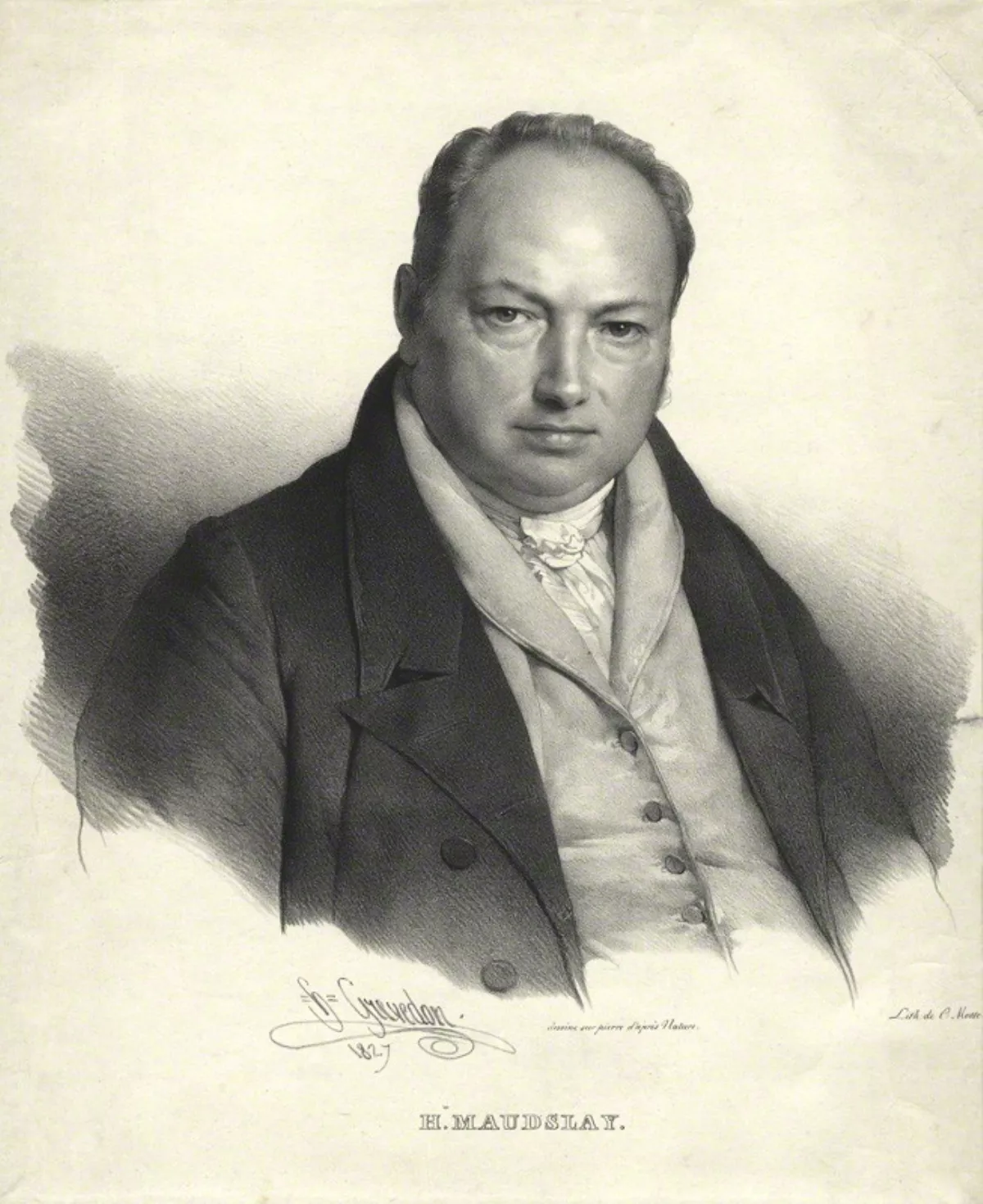 1.
1. Henry Maudslay was an English machine tool innovator, tool and die maker, and inventor.

 1.
1. Henry Maudslay was an English machine tool innovator, tool and die maker, and inventor.
Henry Maudslay is considered a founding father of machine tool technology.
Henry Maudslay's inventions were an important foundation for the Industrial Revolution.
Henry Maudslay's father was wounded in action and so in 1756 became an 'artificer' at the Royal Arsenal, Woolwich, where he remained until 1776 and died in 1780.
Henry Maudslay began work at the age of 12 as a "powder monkey", one of the boys employed in filling cartridges at the Arsenal.
Henry Maudslay seems to have specialised in the lighter, more complex kind of forge work.
Henry Maudslay acquired such a good reputation that Joseph Bramah called for his services on the recommendation of one of his employees.
Bramah was surprised that he was only eighteen, but Henry Maudslay demonstrated his ability and started work at Bramah's workshop in Denmark Street, St Giles.
Henry Maudslay built the lock that was displayed in Bramah's shop window with a notice offering a reward of 200 guineas to anyone who could pick it.
Henry Maudslay designed and made a set of special tools and machines that allowed the lock to be made at an economic price.
Henry Maudslay came up with the idea of a leather cup washer, which gave a perfect seal but offered no resistance to movement when the pressure was released.
Henry Maudslay developed the first industrially practical screw-cutting lathe in 1800, allowing standardisation of screw thread sizes for the first time.
When Henry Maudslay began working for Bramah, the typical lathe was worked by a treadle and the workman held the cutting tool against the work.
Henry Maudslay designed a tool holder into which the cutting tool would be clamped, and which would slide on accurately planed surfaces to allow the cutting tool to move in either direction.
Henry Maudslay's original screw-cutting lathe is at the Science Museum in London.
Henry Maudslay had shown himself to be so talented that after one year the nineteen-year-old was made manager of Bramah's workshop.
In 1797, after having worked for Bramah for eight years, Henry Maudslay was refused a wage increase to 30s a week so he decided to set up his own business.
Henry Maudslay recruited a promising young Admiralty draughtsman, Joshua Field, who proved to be so talented that Henry Maudslay took him into partnership.
Henry Maudslay later became Maudslay, Sons and Field when Maudslay's sons became partners.
Henry Maudslay invented the first bench micrometer capable of measuring to one ten-thousandth of an inch.
Henry Maudslay called it the "Lord Chancellor", as it was used to settle any questions regarding accuracy of workmanship.
In 1823 a Henry Maudslay engine powered the Lightning, the first steam-powered vessel to be commissioned by the Royal Navy.
Henry Maudslay had trained in shipbuilding at Northfleet and, with Joshua Field, became a partner in his father's firm, trading as Maudslay, Sons and Field of North Lambeth.
Henry Maudslay supplied the steam-driven pumps that were important for keeping the tunnel workings dry.
Henry Maudslay intended to buy a house in Norwood and build a private observatory there, but died before he was able to accomplish his plan.
Henry Maudslay was ill for four weeks and died on 14 February 1831.
Henry Maudslay was buried in the churchyard of St Mary Magdalen Woolwich; he designed the memorial located in its Lady Chapel.
Henry Maudslay laid an important foundation for the Industrial Revolution with his machine tool technology.
Henry Maudslay played his part in the development of mechanical engineering when it was in its infancy, but he was especially pioneering in the development of machine tools to be used in engineering workshops across the world.
Henry Maudslay's company was one of the most important British engineering manufactories of the nineteenth century, finally closing in 1904.
Many of the tools made by Henry Maudslay are in the collection of the Science Museum, London.